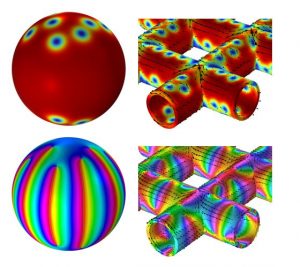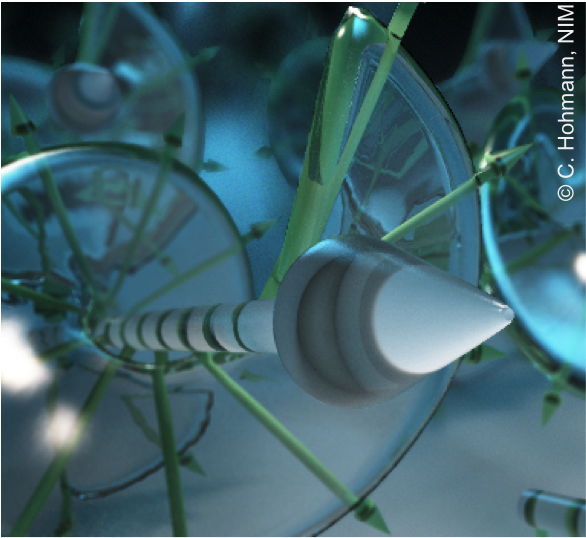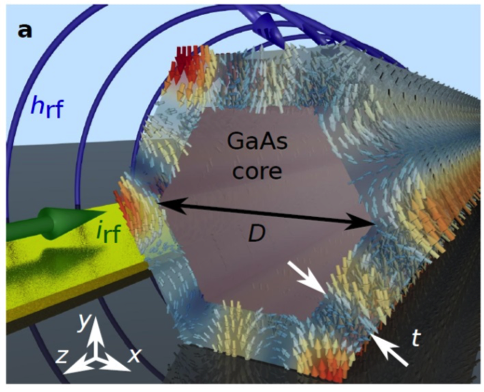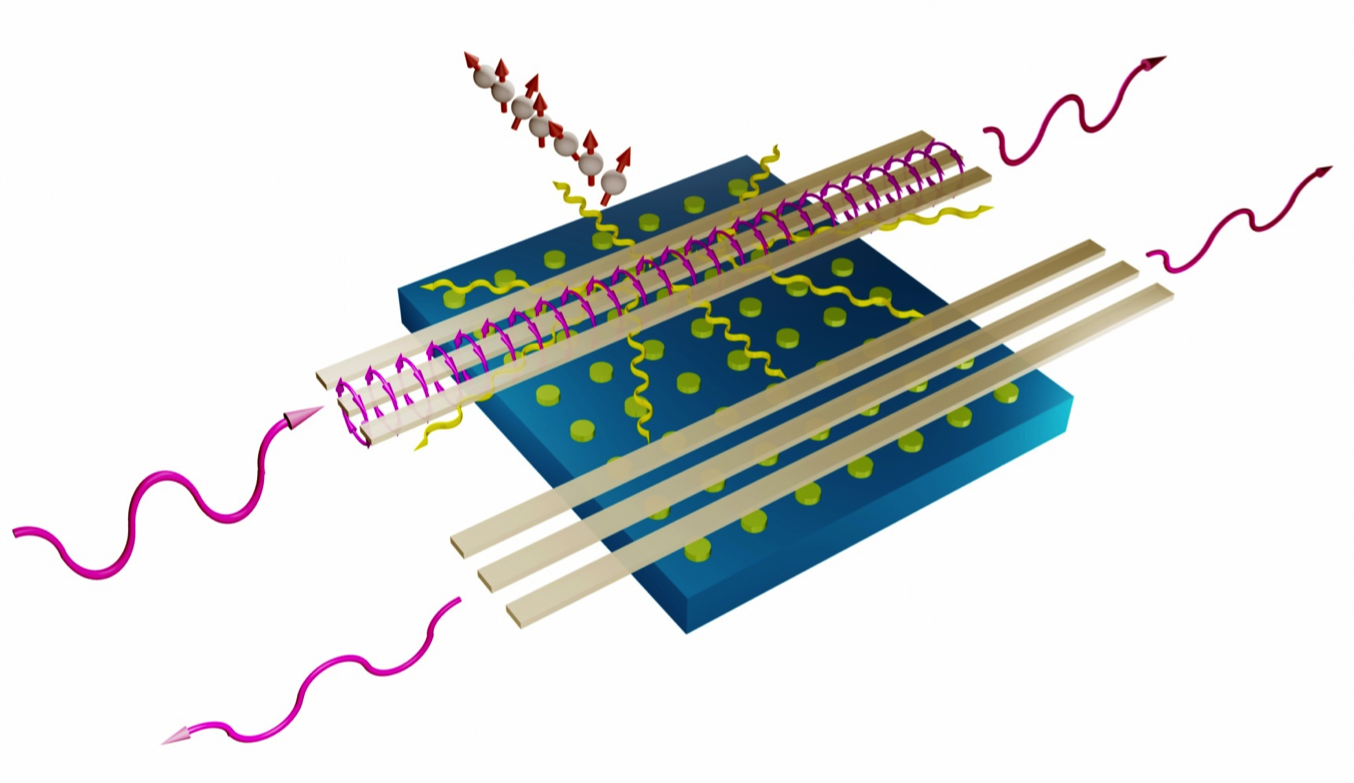3D curvature controlled superconductivity
Superconducting materials are important in quantum science and engineering as well as in applications where high magnetic fields are required (such as magnetic resonance imaging). We investigate the physical properties of 3D superconducting nanostructures which are subject to an applied magnetic field and whose surfaces exhibit engineered curvatures with unprecedentedly small radii. We expect to induce novel superconducting characteristics which might be relevant for next-generation sensors and quantum computing architectures. By using numerical methods, we first study the interplay of geometry and transport currents with and without topological defects such as Abrikosov vortices on curved surfaces (see illustration). In future research we will then fabricate and measure superconducting spherical shells, nanotubular structures and 3D lattices of interconnected nanotubes which can function as vias in 3D superconducting circuits.

Caption: (top row) Superconducting order parameter with topological defects. (bottom row) Superconducting phase.
Skyrmions

In the framework of the Sinergia network “Nanoskyrmionics” funded by SNSF (starting date: Oct. 1, 2017) we explore the microwave properties of newly synthesized chiral magnets hosting non-collinear spin structures and skyrmions (skyrmions.epfl.ch). A special focus is put on periodic lattices of topologically protected spin structures enriching the research field of magnonics (M. Garst et al., J. Phys. D: Appl. Phys. 50, 293002 (2017), [open access]). We are also part of the Transregio/SFB TRR80 “From electronic correlations to functionality”.
Nanotubes

We prepare and explore ferromagnetic nanotubes which can host topologically protected solitons (domain walls) and geometrically confined magnon modes. The nanotubes are formed as shells on filamentary semiconductor crystals, i.e., semiconductor nanowires (image: D. Rueffer, EPFL).
Magnonic Crystals and Grating Couplers

Periodically and aperiodically arranged nanomagnets are explored concerning quasistatic and dynamic properties. They can be used to tailor band structures for spin waves and thereby manipulate microwave signals on the nanoscale. We have shown that a ferromagnetic nanodisk array on a magnetic thin film serves as an efficient microwave-to-magnon transducer – a key device for magnonics (image: H. Yu, Bejing).
THz Magnonics